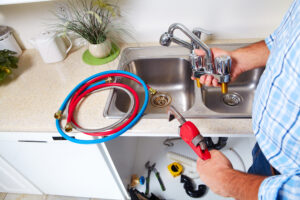Water heaters are electrical appliances tasked with heating water for daily household use.
They comprise a tank for water storage before it is heated. Highly crafty and experienced plumbers perform the fixing of water heaters.
In some isolated cases, water heater setup can also be handled through a DIY. However, remember, you have to be a licensed plumber for you to qualify in executing this kind of task.
In addition, some permits have to be obtained before you can attempt this intricate task. DIY or the technician way, this article gives the process of installing heaters.
Preparation
Preparation for the installation entails disabling service lines connecting the previous heater while emptying the tank.

Water heater repair
For safety considerations, you should first cut off the power connection if your heater is electrical. If yours is a gas-run heater, the plumber cuts off the gas line supplying it. Having done that, they will then go ahead to disconnect the utility lines by disengaging electrical wires and gas pipes feeding the tank. Should the valve be very tightly secured, they will loosen it with a device known as a wrench.
With the heater now safe to be worked on, the plumber will drain the tank by connecting a piece of a hose to the outlet valve. Without that, it will be almost impossible to lift the broken or old heater. Draining takes some time so the plumber will have to wait or they can utilize this wait time by installing utility lines for the new system.
Removing the Old Heater
Even though the tank is now empty, the plumber will still need a helping hand to remove it from the current platform. This is the point at which the plumber may ask for your help to take out the tank. However, in the case where the establishment is being done to a new house, the plumber will first need to construct a platform for the heater. The platform must be slightly raised from the surrounding ground and achieve a perfect level. Alternatively, a thick solid wood platform can carry the incoming new water tank.
Positioning the Incoming Heater
With the platform ready in a brand-new house, the plumber will then proceed to position the new heater. Again, at this stage, the plumber may require your help to lift and position the tank just in case they come alone. However, most plumbers operate as a team so they are not likely to bother you with the dismounting and positioning. In old houses, the technicians make use of the old platforms previously occupied by the broken heater. All that is required of them is to just position it and achieve a level ground. With the heater attached properly, they will then install a T&P relief valve should it be missing.
Service Lines Connection
At this stage, the plumber will join the water line to the system. This is done by installing the cold and hot water lines to the inlet and outlet valves respectively. Copper pipes enjoy the most favor amongst the majority of homeowners given their corrosion-resistant nature. To prevent water problems through loose fittings, make good use of a wrench to secure them. They will then install electrical lines to the junction box of the new electrical heater. The plumber will then install and tighten gas conduits to the gas valve.
Filling up the Tank
Now that the links are secure and leak-free, the plumber will then turn the inlet valve to commence the process of filling up the tank. Filling up the tank will take some time so the plumber will have to exercise some patience. A warm water faucet should be open somewhere within the house to rid it of trapped air to avoid an airlock. For any possible leaks, the plumber will tighten the loose connections accordingly.
Final Steps
The plumber finalizes the installation by testing the system. With a full tank, the plumber tests it by turning the power switch on the circuit breaker. Gas heaters should be turned on by igniting the burner. Lastly, they will set the thermostat at the optimum temperature for safety and energy efficiency.
As you may have realized, we insisted on the professional method of installation only. This is due to the stringent safety precautions and permits and inspections required. However, this does not mean that a DIY should not be attempted. Despite this, lots of caution should be exercised, before which permits must be obtained and inspections done.




